Silvestro Lega (Modigliana, 1826 - Florence, 1895) was one of the main exponents of the Macchiaioli group, whose innovations in terms of color and well-defined outlines in his drawings he took up, but he remained detached from them in terms of the subject matter of his paintings. In Silvestro Lega’s most famous works, in fact, simple and intimate everyday scenes pervaded with calm and tranquility are reproduced.
An artist with a tormented life, Silvestro Lega was also a cultured painter, capable of numerous references to ancient art, particularly that of the Renaissance, and of dealing with his subjects by creating compositions with a realistic, domestic intonation, enlivened by vibrant effects of light and atmosphere (with which he also demonstrated an unexpected closeness to the Impressionists, whom he would come to know rather late and appreciate: read here an in-depth study on the arrival of Impressionist painting in Italy).
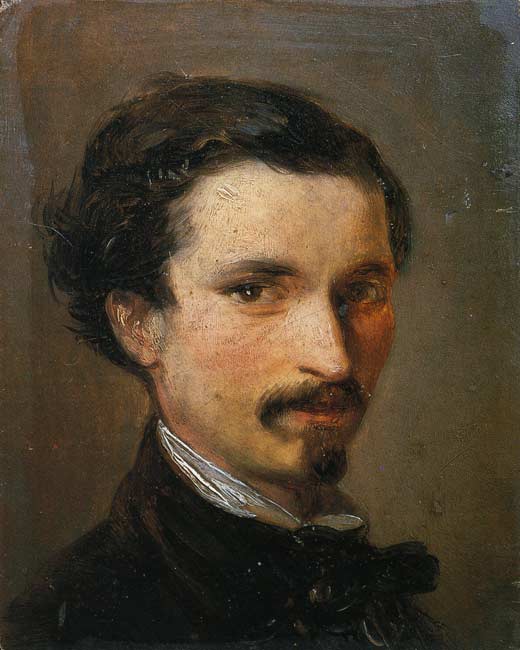
Silvestro Lega was born on December 8, 1826 in the Tuscan Romagna region. He was the son of the second marriage between his father Antonio Lega and Giacoma Mancini. Antonio Lega’s first wife had in fact died in childbirth after bearing him nine children in twelve years. Giacoma Mancini, on the other hand, was one of the servants in the Lega household, and despite a humble background she is remembered as a very intelligent woman who took care that her children received an excellent education. Not much is left of Silvestro Lega’s boyhood; what is known for certain is that in 1838 he enrolled in the Collegio dei Padri Scolopi in Modigliana, and in those years his passion for painting exploded, finding no particular interest in studying. At the age of seventeen he was able to move to Florence, moved by a desire to live in a city that was fervent from an artistic point of view and to break away from his family and economic problems. He enrolled in theAcademy of Fine Arts and made an excellent course of study, himself recognizing that he was no longer an amateur but approaching art by mastering its rules. At the same time, he began to find the academic setting too rigid and mortifying, so he decided to leave the Academy to take private lessons from the purist Luigi Mussini in about 1845.
In the meantime, Lega became caught up in the Risorgimento ferments related to Mazzini’s ideas, probably aided by the activism in Modigliana of the priest Don Giovanni Verità, and, caught up in the enthusiasm, he volunteered for the war against Austria. The military commitment slowed down his artistic activity. Upon his return from the front, Lega resumed painting at full speed, still dwelling on purist modes. However, he was beginning to become dissatisfied with Mussini’s teachings, lamenting in a famous phrase that “we were making progress but all in the drawing part, because we both knew little about color.” He left his studio and went on to paint with Antonio Ciseri, a realist painter with whom he made further progress in this regard.
Toward the end of the 1950s, however, Lega began to frequent the Caffè Michelangiolo. A number of painters united by their rejection of the traditional manners imparted by the academy used to gather in this bar in Florence to have lively discussions on various topics. Here the Macchiaioli group was formed. But Lega, while recognizing in their theory and works some interesting new insights, preferred to keep his distance from the group not liking their rowdy and goliardic ways, and above all finding their claims regarding creative freedom sterile since they were very aleatory.
Frictions with the Macchiaioli, however, led Lega to a period of artistic crisis, in which he began to doubt his certainties and began to reason about the modes of his painting, beginning to consider that they might be outmoded. He decided to retire to Modigliana, his hometown, to paint in solitude, devoting himself to a few portraits. This period of reflection made him regain his self-confidence. In 1859 Lega again returned to arms, participating as an artilleryman in the Second War of Independence, and once back in Florence he became more friendly with the group of artists at the Caffè Michelangiolo. This period of renewed serenity corresponded to a qualitative leap in his painting, evident in some paintings with episodes from the Risorgimento that the artist executed in 1859 for a competition. With the money earned from these paintings, Lega settled in a new residence in the Santa Caterina district, where other artists including Giovanni Fattori were staying. During this same period, in the late 1850s to mid-1860s, the painter followed the Macchiaioli in their open-air painting sessions at Piagentina, near Florence, and was enraptured by the experience.
From that moment on, Lega began to experience a productive and, above all, serene period on a personal level; moreover, during an open-air painting session he met the Batelli family, with whom he established a friendly relationship. Lega’s economic conditions had become unstable again, and the Batellis proposed that he move into their house and continue painting. During his stay, Lega fell in love with Virginia, the Batellis’ eldest daughter who had returned to her father’s house after the end of her marriage, and the union between the two was approved by the family with great pleasure. The painter, feeling more at ease, began to work briskly on a conspicuous series of paintings. Unfortunately, Lega’s serenity did not last very long, for in 1870 his beloved bride passed away due to consumption, and in the meantime there were other mournings in the Batelli family. These events plunged Lega into deep sadness and he had another artistic crisis, also caused by some of the criticism he received from his Macchiaiolo friend Telemaco Signorini.
About nine years later, however, with the help of some friends and supporters Lega managed to get out of the dark state he was in and returned to painting prolifically, participating in several exhibitions and increasing his social life. Among the most important friendships of this period was that with the painter Arnold Böcklin, whom Lega also wanted to portray. He spent the last years of his life peacefully and died on September 21, 1895, in Florence, in the Hospital of San Giovanni di Dio. His remains are preserved in the Modigliana cemetery, where a bust of him made by Cesare Fantacchiotti has been placed.
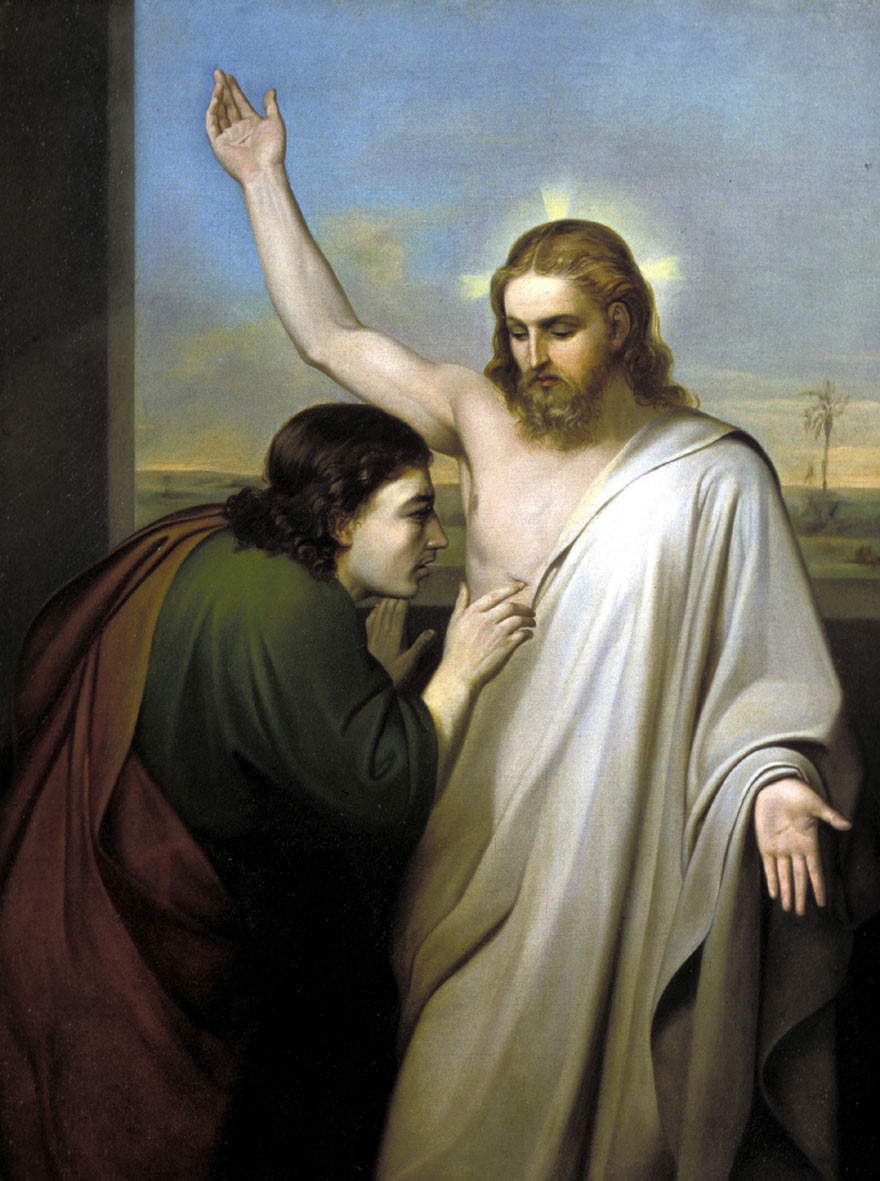
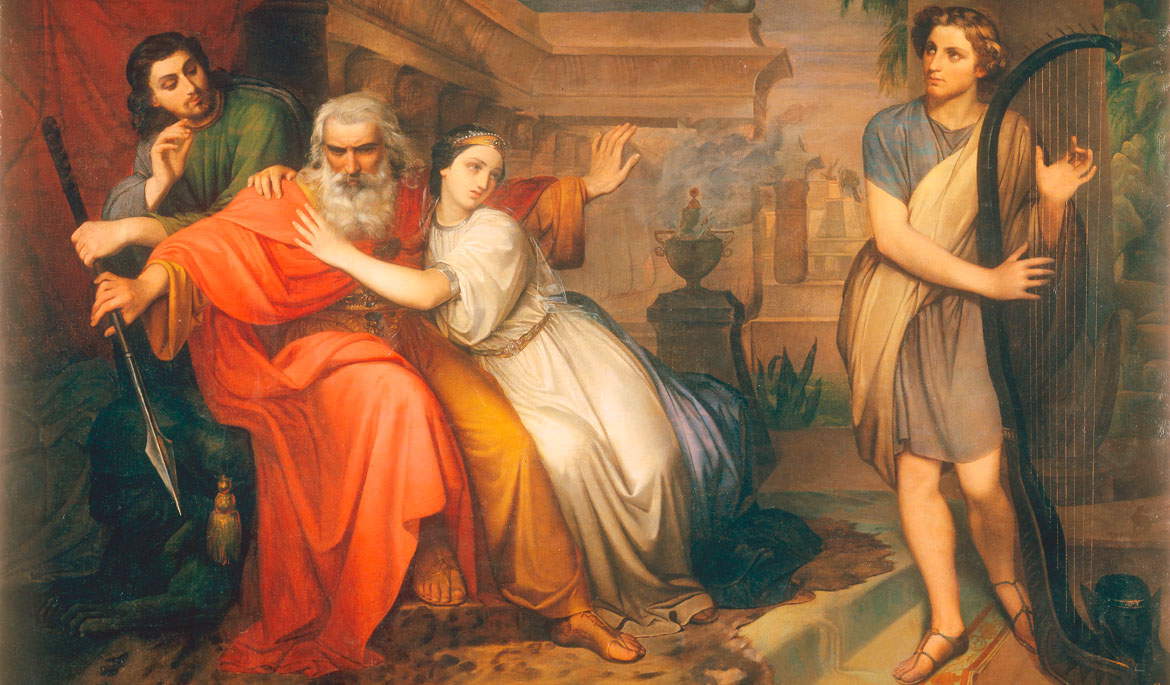
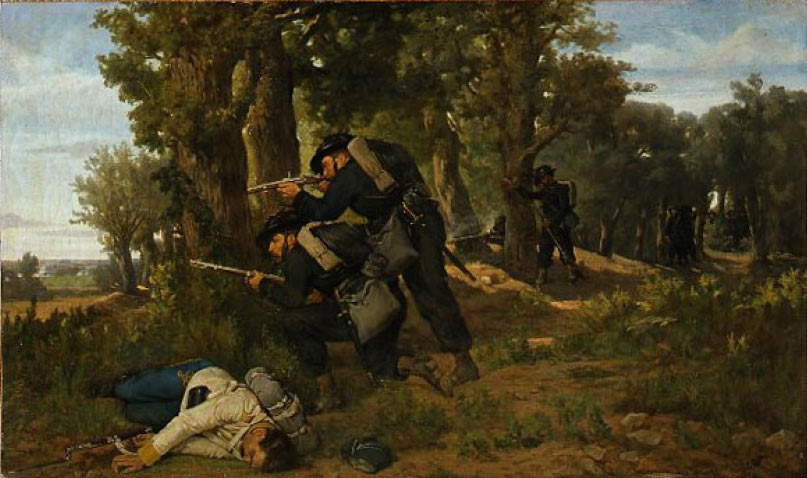
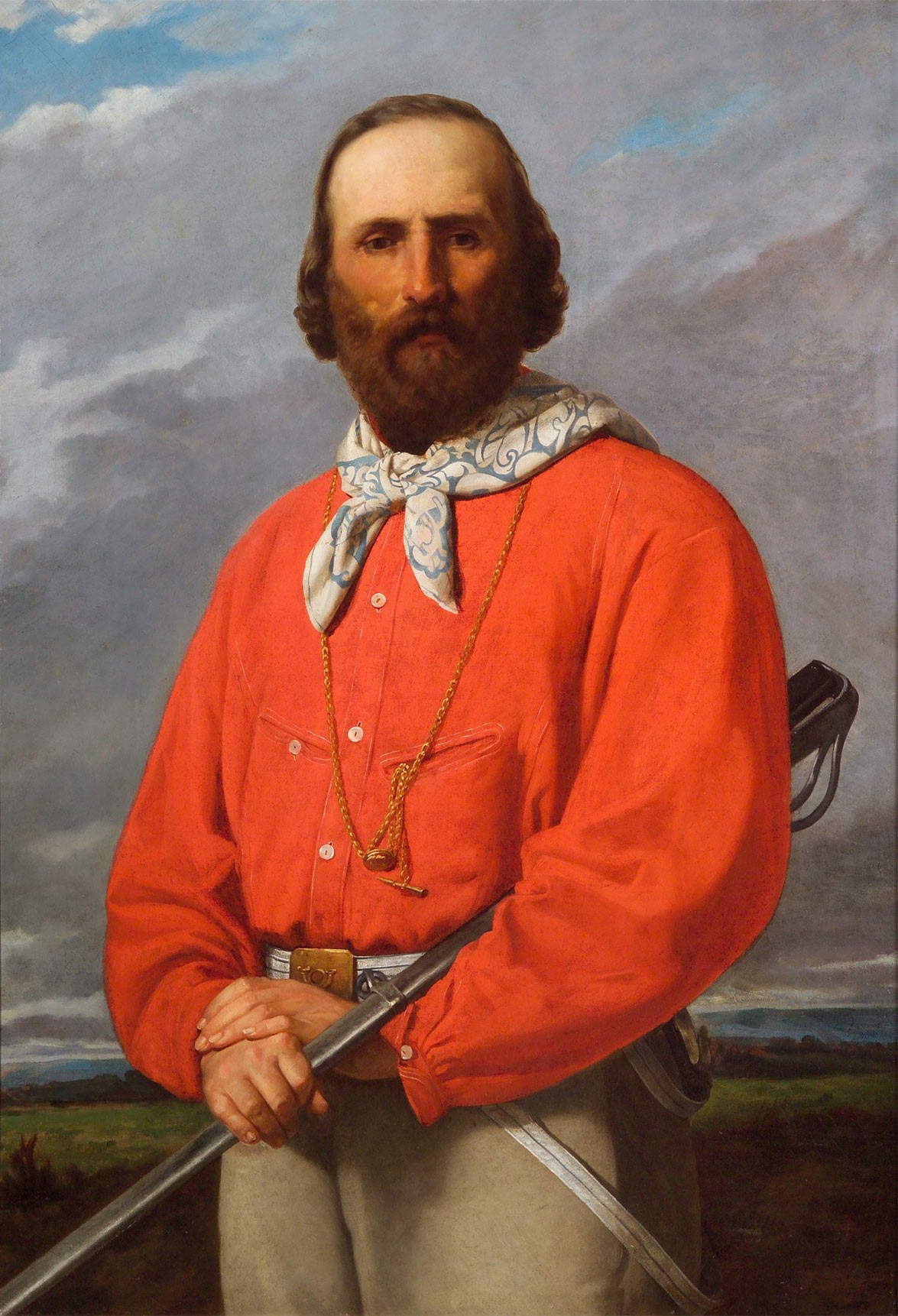
Silvestro Lega’s paintings are characterized by drawings with precise outlines, which go to create well-defined and organized compositions in space, and by clear, limpid colors. In general, changes in theme or style can be found in Lega’s production that can be connected with more or less fortunate periods in his life. Initially, in his youth, the Italian painter adhered to the purist style, bringing reality to the canvas in a very realistic manner adhering to the teachings of Luigi Mussini.
Upon his return from enlistment in the Risorgimento conflicts between 1848 and 1849, Lega’s painting continued to be within the purist framework. However, as seen above, Lega had changed masters by starting to attend the studio of Antonio Ciseri. Thanks to his teachings, Lega made further progress in organizing the elements in the painting so that the representation would be even more truthful. It was Ciseri himself who had encouraged him in the making of one of his first paintings, The Incredulity of St. Thomas (1851). In addition, Lega in 1852 won the triennial competition of the Florence Academy with the painting David Calming the Fury of Saul with a Harp (1852) decidedly purist in both theme and style.Military experience and adherence to Risorgimento ideas return later in a number of works that portrayed precisely scenes in the field of warfare, including Return of Italian Bersaglieri from a Reconnaissance, the lost Reconnaissance of Hunters in the Alps and An Ambush of Italian Bersaglieri in Lombardy, all dated 1861 and characterized by both realistic elements and undeniable patriotic sentiment. Also from the same year, moreover, is Portrait of Giuseppe Garibaldi, which declares Lega’s great admiration for his deeds.
Shortly thereafter, Lega approached the Macchiaioli group mainly in terms of painting “en plein air” and the use of patches of color juxtaposed to create light and shadow. However, he distinguished himself from the other artists in the group by the much more calm and serene tone of the scenes depicted.
Following his engagement to Virginia Batelli and frequenting his parents’ home, Lega experienced a very serene personal moment and produced many works, including the two most famous of all, Il canto dello stornello (1867) and Il pergolato (1868). In these paintings, and in many others from the same period, The painter brings simple everyday scenes to the canvas, experienced with great tranquility by the protagonists. Despite the lightness of the subject matter, these scenes are rendered by the artist with an obvious poetic lyricism, elevating them as if they were important historical themes. Lega’s works, moreover, capture an important transitional moment for Italy, which in the second half of the 1800s was still essentially a rural country and timidly approaching the industrial revolution.
In Canto dello stornello , an ordinary moment in middle-class families is depicted, giving it a poetic aura. It features three women, who are none other than the Betelli daughters including Virginia, the painter’s bride. One of them is playing the piano and all three are intent on singing. The girls’ dresses look very elaborate and are brightened by the light coming from the window and lingering on certain details, such as the pianist’s hands, her bodice, and the sisters’ white blouse.
The arbor is undoubtedly Lega’s best-known painting(read an article about the work here). It was originally supposed to be titled Un dopo pranzo (An After Lunch), a title that would have undoubtedly explained even better the scene portrayed, namely the gathering of the family in the pergola for the post-prandial coffee ritual, a typically Italian tradition. The scene features only female figures conversing relaxed in the shade of the pergola, as they await the arrival of the maid with the coffees, who is, in fact, coming over on the right. There are many details present that make the work decidedly realistic, starting with the pots of plants arranged on the little wall in front of which the maid is passing, rendered with accuracy and abundance of detail, and ending with the surrounding countryside, which is also decidedly true to life, and concluding with the long shadows cast on the floor of the pergola, reminiscent of the warm, sly brightness of summer afternoons. Even, between the joints of the tiles, it is possible to notice some tufts of wild grass. In this work, the use of bright colors and the play of light and shadow is at its full potential, and it is no coincidence that the figures are all placed against the light, an expedient the artist uses to make the viewer also perceive the coolness the girls seek in the shade of the vegetation.
Toward the conclusion of his life and, consequently, of his artistic career, Silvestro Lega’s style, on the other hand, becomes much more tense and fragmented, due to the unpleasant situations that the artist again faced after the loss of his wife. See as a clear reference Contadinella sulla scala (1887-1890), where the calmness of the earlier paintings gives way to much more “nervous” signs and somber colors.
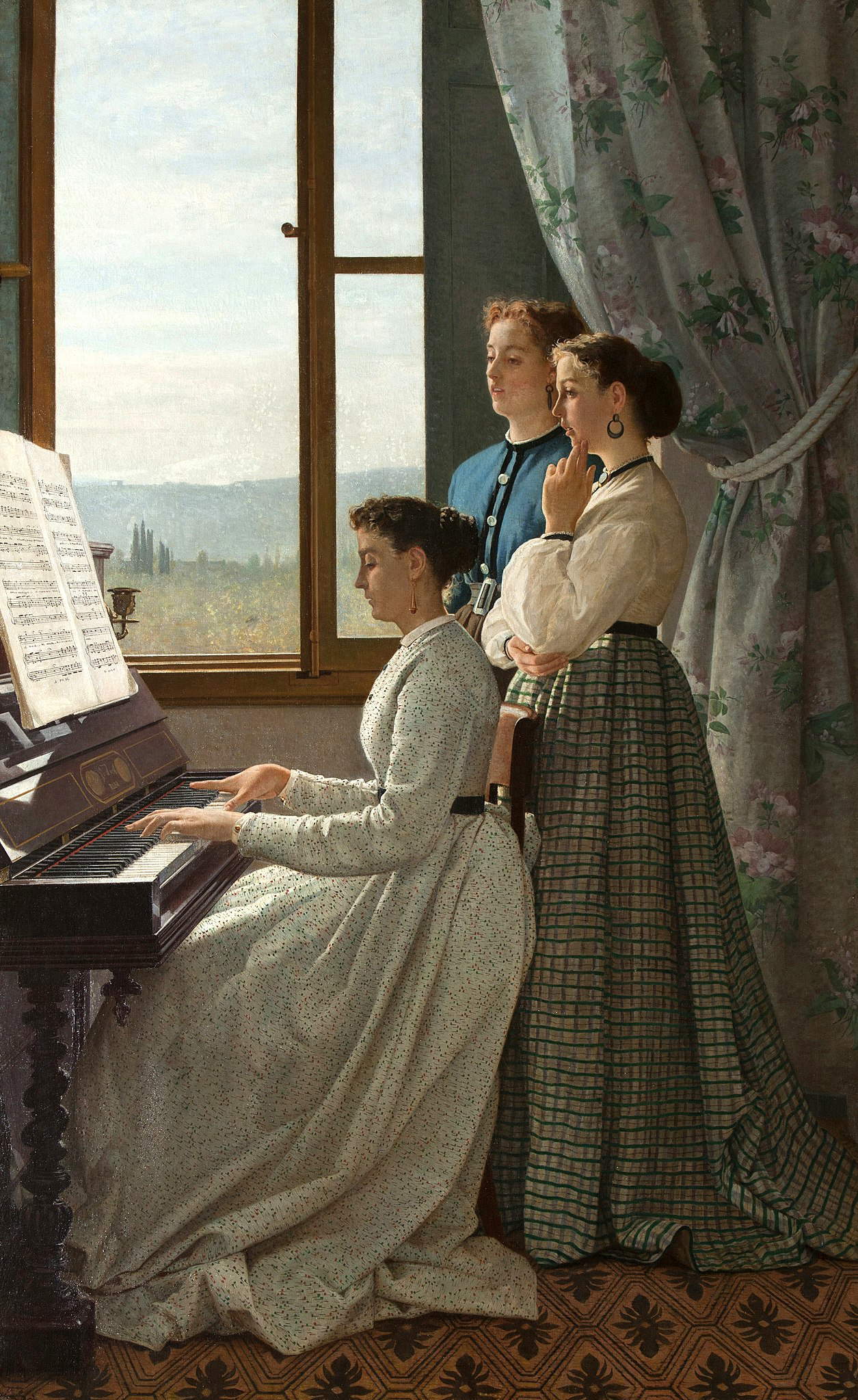
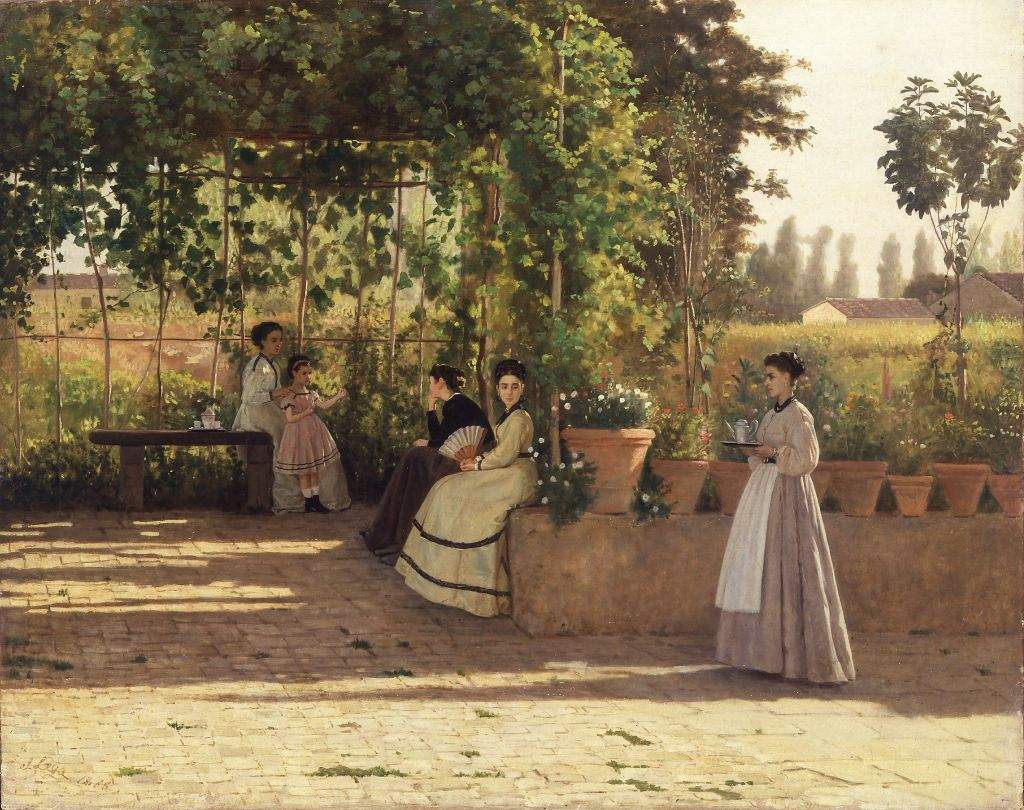
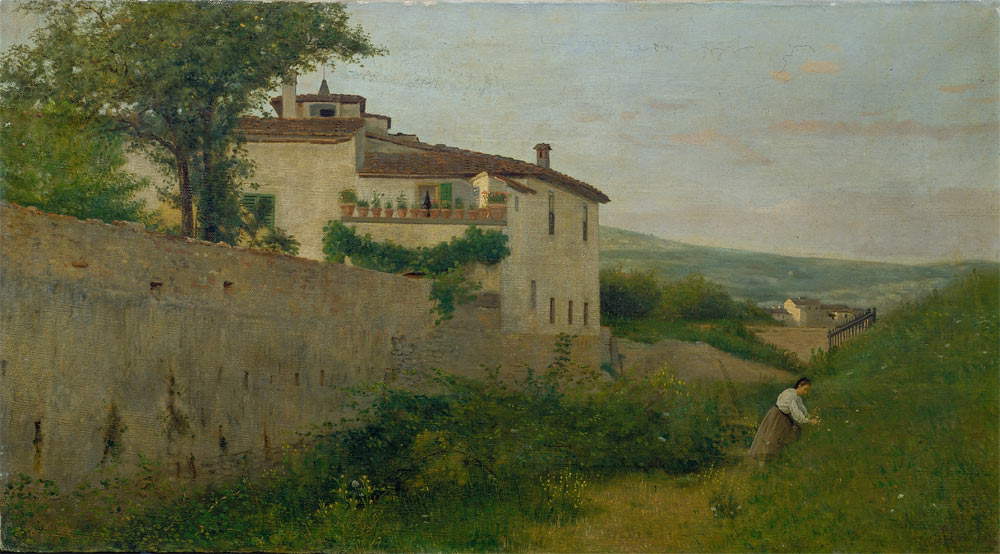
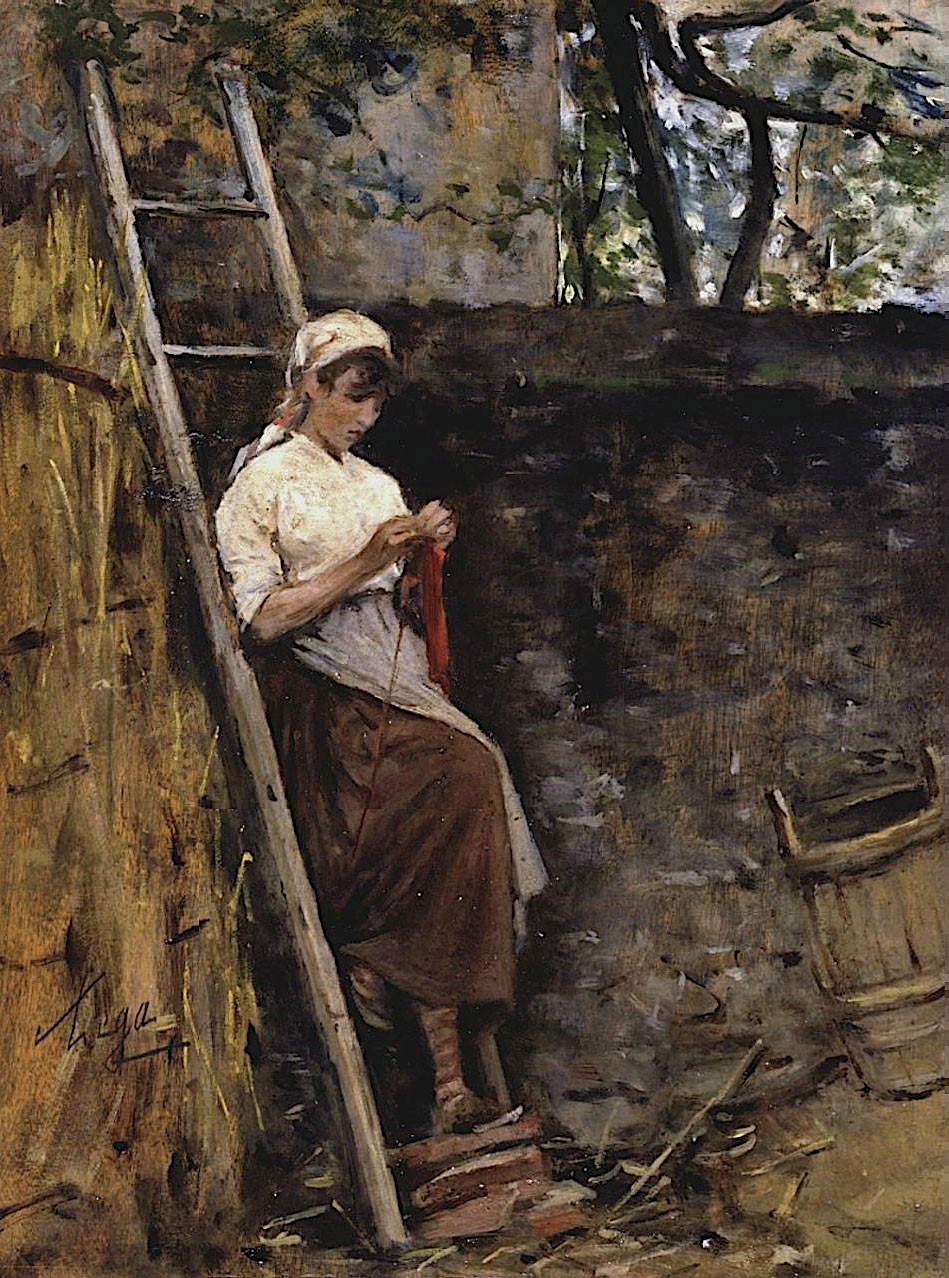
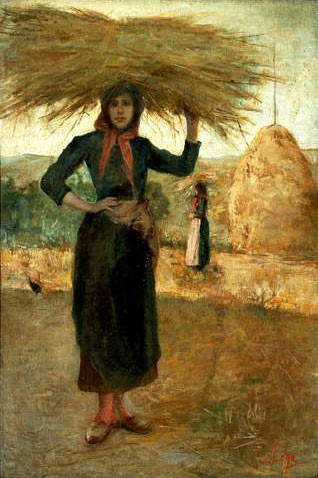
Almost all of Silvestro Lega’s paintings are preserved in Italy. The following works can be seen in the Pinacoteca Comunale Silvestro Lega in Modigliana (FC), the painter’s hometown: The Incredulity of Saint Thomas (1851), Portrait of Giuseppe Garibaldi (1860), and Portrait of Don Giovanni Verità (1885).
Several paintings are preserved in Florence, including in the Uffizi Gallery David calming Saul’s fury with a harp (1852), Canto di uno stornello (1867), and Contadinella sulla scala (1887-1890). Silvestro Lega’s most famous painting ever, Il pergolato (An after lunch) (1868), is kept in the Pinacoteca di Brera in Milan. Also in Milan, you can see La fienaiola (1890) in the Gallery of Modern Art. Finally, a painting by Lega entitled Il bindolo (1863) is preserved in the Galleria Nazionale d’Arte Moderna in Rome.
 |
| Silvestro Lega, life, works and style of the most intimate of the Macchiaioli painters |
Warning: the translation into English of the original Italian article was created using automatic tools. We undertake to review all articles, but we do not guarantee the total absence of inaccuracies in the translation due to the program. You can find the original by clicking on the ITA button. If you find any mistake,please contact us.